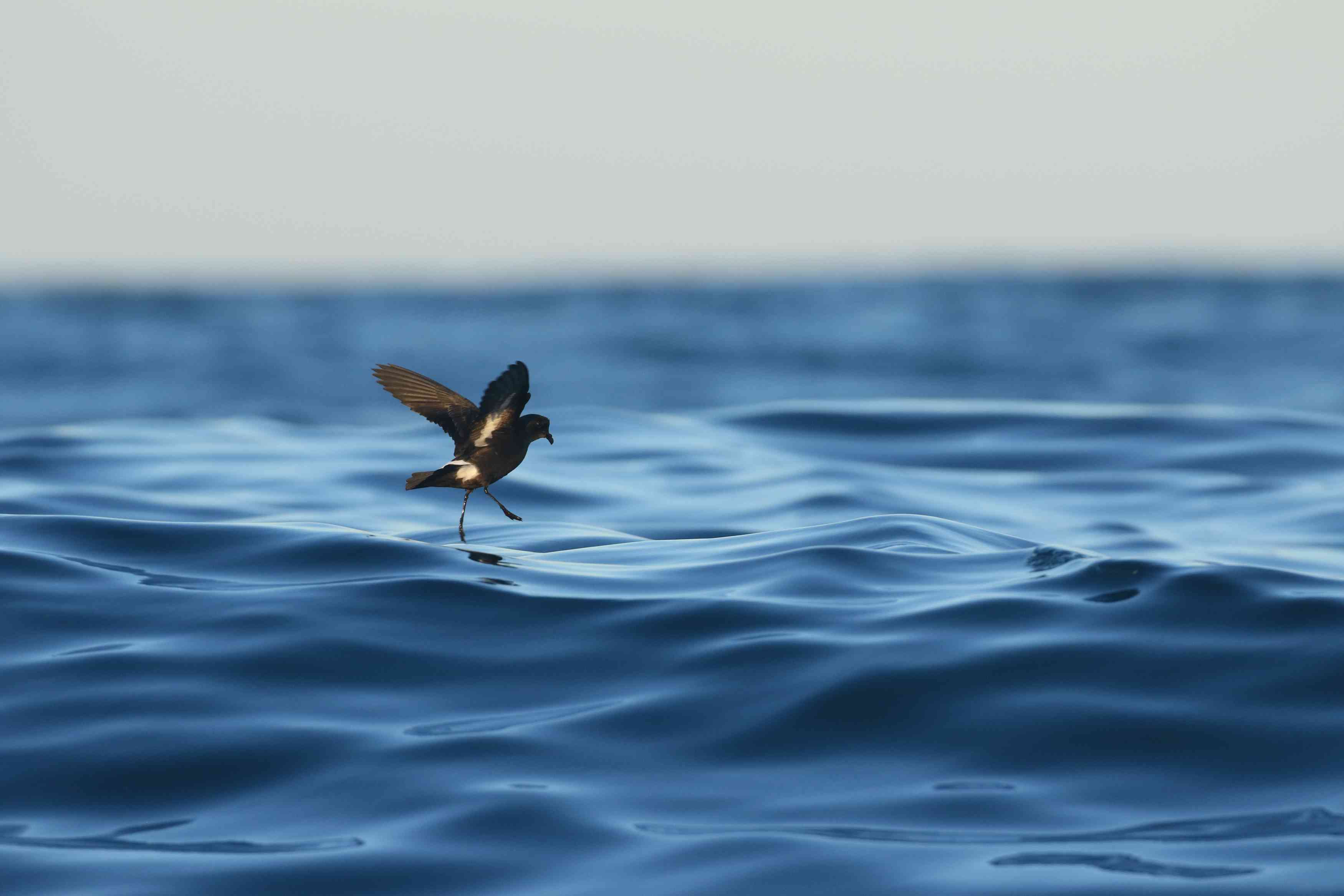16-04-2024
SEAGHOSTS: global spatial ecology and the conservation of the smallest and most elusive marine ecosystems, the northern storm-petrels
Knowing the threats that affect the conservation of northern storm-petrels and improving the protection of the populations of these birds on a European scale.
Northern storm-petrels as bioindicators
New methodologies and innovative techniques for biodiversity monitoring
The SEAGHOSTS project, directed and coordinated by researcher Raül Ramos, from the Biodiversity Research Institute of the University of Barcelona, IRBio-UB, and the Faculty of Biology, department of Evolutionary Biology, Ecology and Environmental Sciences, has been one of the 33 projects funded by the European biodiversity association Biodiversa+ in the BiodivMon call, for research projects aimed at improving transnational monitoring of biodiversity and ecosystem change.
SEAGHOSTS also stands out as one of the 6 projects funded by state institutions within the framework of the call, aimed at improving the monitoring of biodiversity and ecosystem change in the European framework. Specifically, the project will have funding of more than 2 million euros to face the challenge of knowing in depth the smallest seabirds in the world, the northern storm-petrels. All selected projects will be financed by the European Biodiversity Partnership (Biodiversa+), a consortium that promotes excellent research to protect biodiversity and is funded by the Biodiversity Foundation of the Ministry for the Ecological Transition and the Demographic Challenge.
Northern storm-petrels as bioindicators
For the effective conservation of global biodiversity it is necessary to understand the spatial ecology of wild fauna. The main objective of the SEAGHOSTS project is to deepen our knowledge of the global spatial ecology and conservation of northern storm-petrels (Hydrobatidae and Oceanitidae), and to evaluate the main anthropogenic impacts they face throughout the European seas: climate change, renewable energy, aquaculture and plastic exposure. The project aims to address knowledge gaps on marine biodiversity, combining available monitoring, demographic, morphological, genetic and trophic data with new data, collected during the project, to complement sampling across Europe. This knowledge will also contribute, in a more robust and specific way, to the definition of Conservation Units (CU).
The project includes up to 16 partners from 10 European countries (ES, DK, DE, PT, GR, NO, IT, IS, FR, IR), 1 from the USA, and one from Canada, and will be developed during the next 3 years.
The human footprint is distributed unevenly throughout the oceans, and across different political borders, but its impact on the marine environment has been little studied. This lack of knowledge, for example, often hinders the EU's commitment to the United Nations Sustainable Development Goals (UN-SDGs). However, European society is particularly sensitized to green transition processes to mitigate global changes, large investment in low-carbon technologies and the rapid shift towards renewable energy sources (e.g. offshore wind and solar farms) may have also very harmful impacts on marine environments.
Northern storm-petrels are excellent sentinels of the marine ecosystem: they are highly pelagic, cover large distances over the sea, feed mainly on plankton, are very long-lived despite their small size, and are extremely sensitive to anthropogenic threats in general. Until now, its body size and elusive behavior have been a very important limitation for its study.
Knowing the migratory routes of the northern storm-petrels will allow us to mark the critical points of renewable source installations that may affect migratory bird populations. In concert, it allows identifying hot spots or hotspots not covered by the current network of Marine Protected Areas (MPA), editing sensitivity maps of various anthropogenic impacts and contributing to defining the Conservation Units (CU) of the different northern storm-petrels that inhabit our European seas.
New methodologies and innovative techniques for biodiversity monitoring
Knowledge about the movements and migration of wildlife is very important because they are linked to their behavior, their life history, and even their anatomy. Therefore, it is essential to identify migratory routes and wintering areas, since these routes and areas can be associated with very different threats. The behavioral, and even morphological, study of different populations can also help understand if the spatial ecology of a species is driven by genetic and/or environmental variables.
To determine the movements and wintering distributions of the six migratory species covered by the SEAGHOSTS project, including the smallest species, the project will use a combination of methodologies and monitoring techniques such as: ultraminiaturized geolocating devices, habitat modeling, stable isotopes analysis, DNA metabarcoding, geometric morphometry and microplastic characterization. This multidisciplinary approach, with latest generation technology, allows us to identify the metapopulation distributions and the specific habitats of the different northern storm-petrels cells in the European seas. Furthermore, the integration of different techniques and disciplines in the fields of evolution, ecology and conservation, will allow a more solid definition of different Conservation Units (CU).
Therefore, the main results of the SEAGHOSTS project will address a current critical issue regarding anthropogenic impacts on the marine environment, and above all, how these impacts affect species for greater purposes. This connection will be key for better management and conservation of marine biodiversity.
Picture: The European northern storm-petrel (Hydrobates pelagicus) is one of the six taxons of northern storm-petrels that are considered SEAGHOSTS, for which we describe spatial and trophic ecology throughout the world. In the image, a northern storm-petrel walks over the water while looking for food. ©Victor Paris
